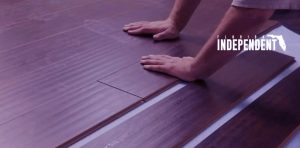What is Floor Prep in Construction?


orWhen it comes to construction, the foundation of any successful project lies in the preparation of the floor. Floor preparation, often called “floor prep,” is a crucial step in the construction process that sets the stage for a sturdy and long-lasting structure. This article will delve into floor prep in construction, exploring its importance, essential techniques, and the materials used.
The Significance of Floor Prep
Floor prep prepares the subfloor or base upon which the final flooring materials will be installed. Whether you’re constructing a residential home, a commercial building, or renovating an existing space, proper floor preparation is essential for several reasons:
1. Ensuring a Level Surface
One of the primary objectives of floor prep is to create a level surface. An uneven or sloping subfloor can lead to various issues down the road, such as cracked tiles, creaky floorboards, and inconsistent flooring materials. Leveling the floor during preparation helps eliminate these problems, ensuring a smooth and aesthetically pleasing finish.
2. Enhancing Durability
A well-prepared floor is more durable and long-lasting. By addressing any issues with the subfloor, such as cracks, gaps, or moisture problems, you can prevent damage to the final flooring materials and extend their lifespan. This is particularly important in high-traffic areas where the floor undergoes significant wear and tear.
3. Improving Safety
Safety is paramount in construction, and floor prep plays a crucial role. An improperly prepared floor can pose tripping hazards and other safety risks. You create a safer environment for occupants and workers by leveling the surface and addressing potential hazards.
4. Ensuring Proper Adhesion
Different types of flooring materials require specific adhesives for proper installation. Floor prep involves selecting the appropriate adhesive based on the flooring type and ensuring it bonds effectively with the subfloor. This ensures that the final flooring materials adhere securely, reducing the risk of delamination or detachment.
Techniques in Floor Prep
Floor preparation techniques may vary depending on the type of subfloor and the chosen flooring material. Here are some standard methods used in floor prep:
1. Subfloor Inspection
The first step in floor prep is thoroughly inspecting the existing subfloor. This includes checking for any cracks, moisture issues, or unevenness. Identifying these issues early allows for targeted solutions.
2. Moisture Mitigation
Moisture can be a significant problem in floor prep, especially in areas prone to humidity or water exposure. For Moisture mitigation techniques, consider using moisture-resistant flooring materials like vinyl, ceramic tiles, or engineered hardwood. These materials are less susceptible to moisture damage and are easier to clean and maintain in damp environments.
3. Subfloor Leveling
Subfloor leveling may be necessary to create a level surface. This can be achieved by self-leveling compounds or adding underlayment materials to address unevenness.
4. Surface Preparation
Proper surface preparation involves cleaning the subfloor and removing debris, adhesives, or paint residues. A clean surface ensures better adhesion of the flooring materials.
5. Crack Repair
Cracks in the subfloor can compromise the integrity of the final flooring. Repairing these cracks with appropriate filler materials is essential to prevent them from reappearing in the new flooring.
6. Adhesive Application
Selecting and applying the suitable adhesive correctly ensures the final flooring materials adhere securely. Different adhesives are ideal for different types of flooring, such as carpet, tile, or hardwood.
Materials Used in Floor Prep
The choice of materials for floor prep depends on the project’s specific requirements and the subfloor type. Here are some common materials used in floor preparation:
1. Self-Leveling Compounds
Self-leveling compounds are used to create a flat and level surface on uneven subfloors. They are easy to apply and provide a smooth base for various flooring materials.
2. Moisture Barriers
Moisture barriers, such as moisture-resistant underlayments or membranes, are essential for preventing moisture-related issues, such as mold growth or warping of flooring materials.
3. Underlayment
Underlayment materials, such as plywood or cement backer board, provide additional support and stability to the subfloor. They also help in reducing noise and providing insulation.
4. Adhesives
Choosing the suitable adhesive is crucial for ensuring the final flooring materials bond securely to the subfloor. Adhesives come in various types, including water-based, solvent-based, and epoxy-based, each suited for different flooring materials.
5. Crack Fillers
Crack fillers, typically made of epoxy or latex, repair cracks and imperfections in the subfloor. Proper crack repair ensures a smooth and even surface.
Floor prep may not always be the most glamorous aspect of a project, but it is undoubtedly one of the most important. A well-prepared floor sets the foundation for a durable, safe, and aesthetically pleasing final result. By understanding the significance of floor prep, employing the proper techniques, and using the appropriate materials, construction professionals can ensure that the floors they create stand the test of time. So, the next time you step into a beautifully finished building, remember that it all started with proper floor preparation, laying the groundwork for success.
